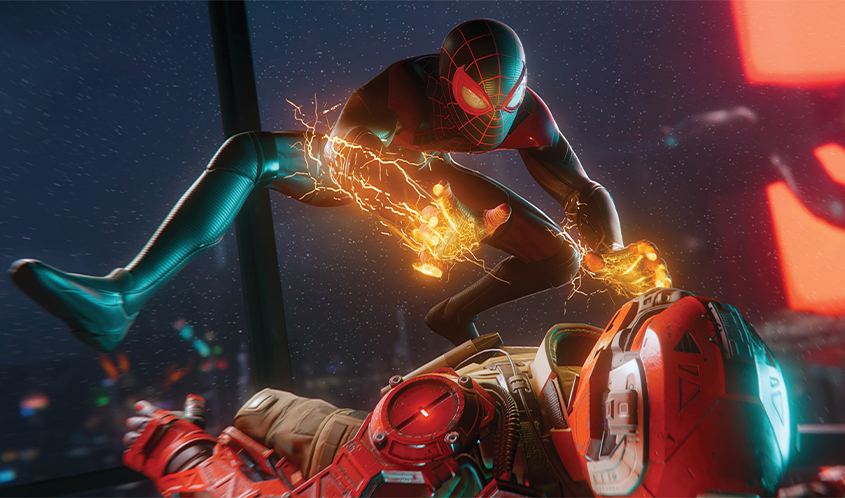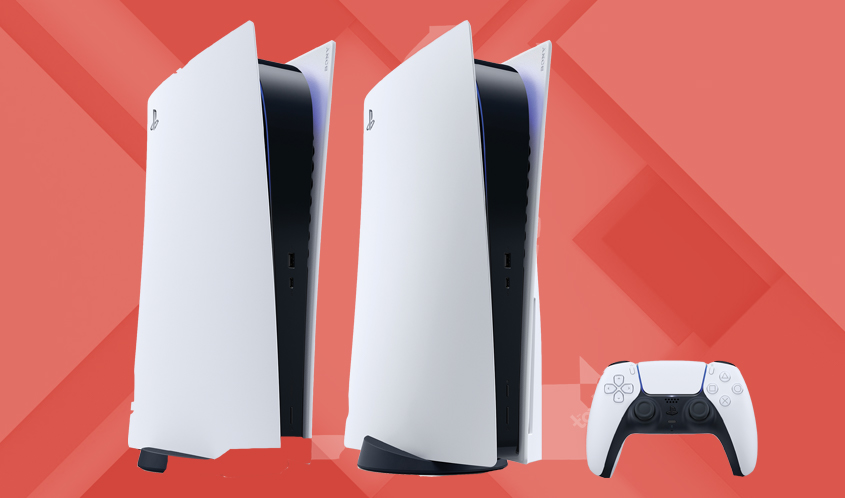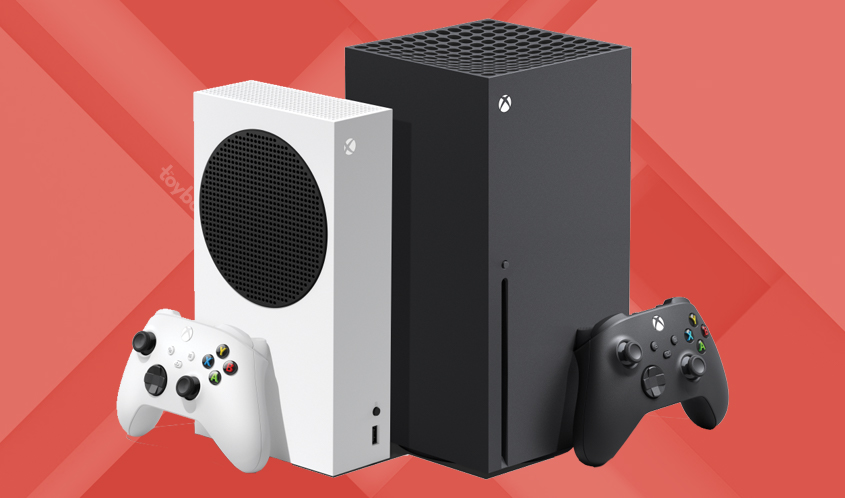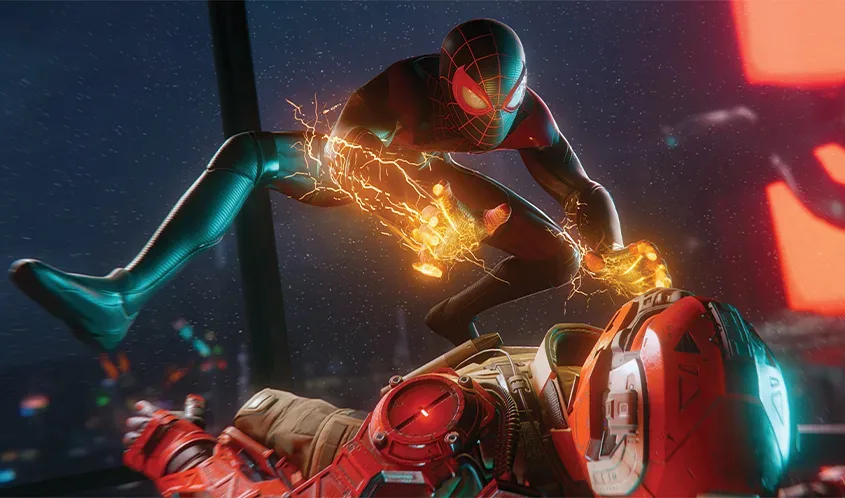
by VICTOR LUCAS, creator and host, “The Electric Playground”
Last November, while the world was navigating through the worst pandemic in a century, the ignition switch was turned on for a brand new generation of interactive entertainment. Sony and Microsoft launched the PlayStation 5 (PS5) and Xbox Series consoles, respectively, jointly determining a new acceptable threshold for state-of-the-art hardware in the video game industry.
While aesthetically and externally distinct from each other, and launched with wholly unique business philosophies, the competing consoles are eerily similar on the inside. They both feature extremely fast storage for game content, blazingly efficient processor performance, and, expectedly, graphics capabilities designed to take the breath away from every modern gamer.
The Future of Games, Like All Entertainment, Is Subscription
Notably, Microsoft launched its systems without a “killer app” exclusive title, due to a delay of the highly anticipated Halo Infinite. Instead, Microsoft leaned into a vast catalog of software available through its Game Pass subscription service — think, the closest thing to “Netflix for video games” currently on the market.
Meanwhile, Sony, coming off of one of its strongest years ever with massive PlayStation 4 hits like The Last of Us Part II and Ghost of Tsushima, launched the PS5 with one exclusive to the console, a state-of-the-art upgraded remake of the highly regarded role-playing game Demon’s Souls. Additionally, Sony served up a couple of upgraded, PlayStation-exclusive, cross-generational titles (PS4 and PS5): The sublime Marvel’s Spider-Man: Miles Morales and the family-friendly Sackboy: A Big Adventure.
Like Microsoft, Sony has a game subscription service as well, called PlayStation Now, and the company is hinting at massive upgrades to its offerings soon.
You Want One, But Can You Find One?
Thanks to sophisticated scalpers and 2020’s understandable manufacturing and retail constraints, neither the PS5 nor the Xbox Series X or S have been easy for consumers to find. Additionally, these complex systems have been plagued by firmware and hardware bugs and idiosyncrasies that are still being worked out.
However, for those who were lucky enough to have found one of these magical unicorns, gaming has been golden. Titles load up incredibly fast now. Massive open worlds, like the beautiful Assassin’s Creed: Valhalla and the stunning Miles Morales game, are rendered in rich, lustrous detail, and the action runs at a very smooth 60 frames per second, which adds a layer of photo-realism that console players have only dreamed of previously.

Other technologies abound, like real-time ray tracing, adds color, shadow, and reflection fidelity that vastly improves the immersion into a scene. Or perhaps even more impressive is that some games, such as Activision’s Call of Duty Black Ops: Cold War, can run at up to 120 frames per second on a compatible TV.
So, the fun machines are here. They are real. They are out in the wild, the players are logged in, and the games are being consumed.
What Now?
Well, the first step is for software developers to distance our modern interactive experiences from what we played in the last generation. No one wants to play a PS5 game that feels like a PS4 game. We do, however, want to be able to play our PS4 games on our PS5s, but that’s a topic for another column.
Conversely, as proven by the disastrous launch of CD Projekt SA’s highly anticipated Cyberpunk 2077, it’s already time for gamemakers and the console manufacturers to drop support for the PS4 and the Xbox One — two machines that began their moment in the sun way back in the ancient times of 2013. Cyberpunk 2077 was a cross-generational launch. The game was meant to be playable on both the PS4 and PS5, as well as Xbox One and Xbox Series consoles, but instead it was released buggy, broken, unfinished, and virtually unplayable — all of which has led to a class-action lawsuit against CD Projekt SA and potentially irreparable damage to the once esteemed gamemaker’s reputation.
What we know now after a few months of PS5/Xbox Series game time is that it’s not enough to look next-gen, the games from now on have to feel next-gen, too. Those incredibly fast solid-state drives in our fancy new Xboxes and PS5s can do more than just load a game quickly. They can make us feel like the vast, superbly detailed, wide-open game worlds stretch on forever and exist without the lengthy elevator or massive door opening sequences that used to hide a new portion of the environment loading in.
The smoke and mirrors that developers utilized to get a big, 3D game to work on previous hardware is something that new console owners won’t have to think about. Look no further than developer Insomniac Games’ next act on the PS5: Ratchet & Clank: Rift Apart. This is a shining example of what is possible with Sony’s custom-made, solid-state drive. In the upcoming game, whole worlds — not just similar looking levels — load up in the blink of an eye as characters zip through dimensional portals to enter and exit one realm, and then another, and another, and another. It’s astonishing.
But this Is Just The Beginning
Not surprisingly, Ratchet & Clank: Rift Apart looks like an early-days technology showcase for Sony’s new hardware, a game system that also includes a slick new controller with a battery of tiny motors focused on providing tactile sensations and precision like never before.
On the new Xbox machines, we can look forward to similar transportive experiences, but with the added benefit of being able to switch between and load right back into games that we’ve got on-the-go within seconds. It’s a feature that Xbox calls Quick Resume.
So, yes, the emphasis right now is on the power of those fast storage drives. The faster frame rates and the vastly improved visuals are not the big stories of this generation — at least not right now. What is impressing players and gamemakers alike is that the time barrier to enter the wild imaginings of game creators is shorter than ever before. With a literal snap of the fingers, we’ll escape to a different planet, a different time, and a different state of mind. Now, it’s with a promise that our game-playing futures will also stretch on in directions we thought were impossible just six months ago.

But what about those games that came out just a few short months ago? Those “game of the year” type games? The Last of Us Part II, Final Fantasy VII Remake, Ghost of Tsushima, Hades, and even Marvel’s Spider-Man: Miles Morales, for example. We could play all of those games on our “old” systems. Why aren’t the new games on our new expensive and hard-to-find consoles better than those games? Well, the short answer is time, and the long answer is 2020. By the end of 2021, we’ll have an excellent look at the full potential of these new game platforms and it’ll be just as video games start to crest a new level of pop-culture prominence.
Hollywood Is Coming for Video Games, and this Time, Everybody’s Ready
For the time being, however, the bar has been set. Arguably one of the most powerful and beautiful games of the previous generation, The Last of Us Part II, which ushered in a fidelity and a consistency for interactive storytelling that we had never seen before, will end up being against which Sony, and presumably, the rest of the game-making community, are judged. The organic animations, the subtlety of performance, the emotional nuance, and the narrative risk-taking all propelled The Last of Us Part II to multiple awards for the best game of 2020. Some will call it the finest product the video game medium has crafted. So finely crafted, in fact, that it calls into question the need for movie or TV adaptations of today’s best video games. Still, a Last of Us TV series is in production with HBO.
Once again, Hollywood is coming for our video games, but the difference is that this time it’s going to work. Witness the success of the Sonic the Hedgehog movie last year, or the expectation for the Uncharted film, starring Tom Holland and Mark Wahlberg. Netflix has several video game adaptations in the works and is already thrilled with the success of its series based on The Witcher.
Movie stars are going to be avatars more than ever before. The beginning of a blurring of interactive and passive entertainment is going to be a massive part of what we witness and consume in this new console generation. We can already see that taking shape in The Mandalorian, a show with video game art functioning as a transportive set design.
Press Start for Next-Gen
The ending of the PS4/Xbox One era of video game entertainment is where we begin. Now, we look to developers to harness the power of these new gaming systems (and competing graphic cards on the PC, plus whatever Nintendo is cooking up for the successor to the Nintendo Switch), and show us how we will care more about the characters and locations we’ll spend time with in the games of the future.
Video games have delivered so many indelible moments and memories already. It is an art form that invites creative expression from the participant, allowing the player to become a part of the narrative work like no other form of communication. And now, with gaming hardware almost powerful enough to replicate what it’s like to look at the world around us through the camera apps on our smartphones, we’re on the precipice of profoundly emotional, interactive storytelling.
Millions of people around the world already deeply care about the entertainment engineered by the video game industry. My prediction is that by the end of this console generation, it will be billions.
This article was originally published in the February 2021 edition of the Toy Book. Click here to read the full issue!


